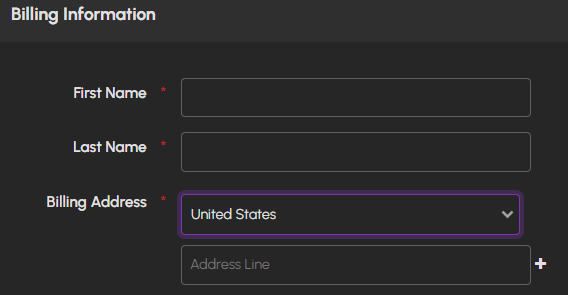Leaderboard
Popular Content
Showing content with the highest reputation on 11/30/24 in Posts
-
UPDATE: As of 11/8, we have updated the ISO installer to run on version 25.04.2.6 of TrueNAS SCALE. Existing users should NOT reinstall to get this version. You can update from within the Activity card on the Dashboard (or the Notification). Hello and thank you for joining the HexOS beta program! You are an elite and vital part of this project and your participation is greatly appreciated. This post contains all the information you will need to get started with HexOS and how to communicate with our team during your beta experience. Disclaimer Beta Products, Software, and any related Services are still in development, and therefore, you are advised to safeguard important data, to use caution, and not to rely in any way on the correct functioning or performance of the products, software, or any related services. Beta Products and Services are provided to you “AS IS”, without any warranty whatsoever. Expectations During your participation in the beta, we expect you to do the obvious: use and test the software. But we also expect you to communicate with us when things don’t go right or if you’re having trouble. Please post feedback and let us know about your experiences, good and bad. That being said, please remember that this is beta software and early access. HexOS has a long and healthy roadmap ahead. Quickstart Guide For those that just want to get started, here’s the TLDR: Download the ISO here: https://downloads.hexos.com/TrueNAS-SCALE-25.04.2.6-HexOS.iso or https://hexos-downloads.sfo3.cdn.digitaloceanspaces.com/TrueNAS-SCALE-25.04.2.6-HexOS.iso (SHA256 Checksum: e8ed99a322affe0969b82b866161a9f6acbc1561e3cc7b2efb2bf120ffe2e856) Use a tool such as Balena Etcher to image a USB flash device with the ISO. Boot your server from the flash device and install the OS to preferably an SSD. When given the option, opt to create the admin password in the installer (do not select the option to "Configure using WebUI"). Remove the flash device and reboot your server when the install is complete. From another device (mobile, tablet, desktop) that is on the same LAN as your server, login to https://deck.hexos.com using your HexOS credentials. Follow the instructions to complete your server configuration. NOTE: As of the 24.10.2.2 build of this ISO, configuring the admin password via the webUI option has been removed from the installer. However, if you select to create an admin password, but then attempt to "cancel" that process, the ISO will proceed with an installation with no admin password set. This is a known bug and the TrueNAS team will be addressing this in a future update to the ISO. Just don't cancel out of creating the admin password in the installer ;-). Hardware Requirements Booting HexOS is designed to support a wide variety of x86 hardware (Intel or AMD). The minimum requirements are a 2-core 64-bit CPU, 8GB of memory, and a 16GB or larger SSD boot device. However, depending on your needs for performance and applications, more resources may be required. Storage Pools Pools are made up of storage devices based on size and type (HDDs vs. SSDs). Storage devices in each pool need to be roughly the same size*. The OS boot device cannot be a part of a pool. Expandable pools require a minimum of 3 devices and can be grown one device at a time. Non-expandable pools can be created with 2 devices. Initial pool width should not exceed 8 devices. Maximum expanded pool width should not exceed 12 devices. At least one storage pool must be created to use HexOS. *In the event of slight variations (e.g. 240GB and 256GB), devices can be grouped, but total capacity for the pool will sacrifice the larger device’s excess storage. Build Recommendations HexOS has been designed so that a relatively modern PC can be easily transformed into a very viable home server. This means using standard HDDs/SSDs and using onboard controllers for storage/networking. However, since we’re based on TrueNAS, our hardware support is actually rather vast. For more detailed hardware recommendations for advanced builds, please refer to the TrueNAS SCALE Hardware Guide. Installing in a VM As HexOS is based on TrueNAS SCALE, it can be installed as a virtual machine as well. While the process should be fairly self-explanatory, please see the TrueNAS SCALE documentation for additional instructions on VM installation. Setup and Configuration Once the OS has been installed and rebooted, you will use a web browser on the same network as your server to register your system and complete the setup process. This can be a PC, tablet, or mobile device. Using a capable browser, login to https://deck.hexos.com. Beta 1 Features Our first release is focused on providing a streamlined user experience for setup and configuration and laying the framework for what’s to come. The main features of Beta 1 include: Setup and configuration wizard Configure your home server in minutes with ease. Analyze system health, with warnings for SMR HDDs. Auto-configure storage pools to safeguard against device failures. Securely manage your server remotely via Command Deck. Storage device management Detect error states and conditions and report through the dashboard Highlight individual storage devices and their respective faults Replace devices from storage pools due to failure or preventative maintenance Expand pools as little as one device at a time Folders and users Create and share folders over your local network. Easily manage permissions for secure access. Apps One-click deploy Immich as a personal photo library app. One-click deploy Plex as a home media server. Automatic folder creation for app storage. Dashboard / UI Access key statistics like CPU, memory, network, and storage usage at a glance. Monitor storage health and see alerts for errors or degraded pools. Manage multiple servers from a single, unified interface. Enjoy mobile-responsive design for effortless navigation on any device.8 points
-
GREAT QUESTIONS! Answers below: When future versions of TrueNAS are released, we will test them internally before we make them available via an update mechanism within our UI. Most updates should be able to be applied immediately, but in the event we find a reason to delay the update, notice will be provided to the community. As a more direct question, we think most OS updates will be doable within 1-2 weeks of their TrueNAS SCALE release. You can disconnect us from your server at any time and just use the TrueNAS UI if you want. However, the "install" is still a HexOS install at that point, pointing to our app repo. If you want, you can reinstall TrueNAS SCALE native on your boot device, reboot, import the storage pools we created under HexOS, and continue using TrueNAS natively from there. Yes. If you do things that are destructive, they will have destructive impact ;-). To be clear, there is no safety net when you're navigating in the TrueNAS UI. No bumper lanes there to stop you from shooting yourself in the foot, so the TrueNAS UI is "Swim at your own risk!". We are a replacement management interface for TrueNAS SCALE. The primary focus in the early beta is ease-of-use. Longer term, we will build a docker container that will side-load with the OS to add additional functionality not natively available or part of the out-of-the-box TrueNAS SCALE experience. Buddy backups is a great example of a feature that we are building that will leverage technology in TrueNAS (e.g. replication), but will wrap it in simplicity and marry it with a service that makes connecting to other users far more automated. The app repo that HexOS points to is a clone/fork of the app repo provided by TrueNAS themselves. This allows us to continue to build out our app library independent from them, but also allows us to incorporate anything they do with relative ease. There is no method to adding additional app repos within TrueNAS (nor HexOS), but we do intend to support loading something like Portainer (or another equivalent) for advanced users that want to add 3rd party containers. The command deck will be required for certain functionality. It will ALWAYS be required for initial system provisioning. The main reason is that the HexOS installer does not include our UI and it never will. Instead, the local UI will be loaded via a Docker container that we will install after initial system provisioning. Think of it similar to setting up an iPhone or Android device. You need the Internet + a Google/Apple account to get going, but then you can turn on airplane mode and do whatever you want. Same idea here. The latter (when you receive the early access invite). I updated the terms policy to reflect this as well as it wasn't clear.5 points
-
It is a must these days to have TailScale support, especially for secure remote access. It is far too easy to mess up a WireGaurd/OpenVPN Config, if the goal is security and simplicity, Tailscale VPN access should be a high priority.4 points
-
4 points
-
Not something I've seen mentioned other than the support for a VPN (WireGuard?) Being able to integrate into TailScale with their docker compatibility would be nice and something I currently use in my existing setup for security and remotely accessing resources, utilizing their ACL rules to limit access. Would be a nice consideration, I'm sure this won't be simple but a nice to have 🙂4 points
-
4 points
-
The whole purpose of a NAS to keep data secure and resilient to data loss. Currently there is no way to backup and restore applications. Application Backups/Restore should be plug-and-play. Thoughts: First party implementation Simple Application independent Backup and restore applications Granular restore/backup individual applications Restore applications even on a new Hexos system from backup End-user should be able to browse application data through a file explore Breakaway from ZFS mindset like snapshots (abstracted away behind an advanced menu) and give users a simple traditional backup and restore option.3 points
-
Hello, I hope to see tailscale and setup guide for it on day 1, I believe this is one of the main apps Or Tailscale not here due to their partnership with Unraid?3 points
-
HexOS is a fully capable server OS on the back end, with all the difficult technical knowledge requirements that entails. The difference is that the front end is smoothed and curated for ease of use by those of us that aren't willing to devote weeks and months of our lives Its main focus is as a file storage server, but it can also host many interesting things such as local media servers (build your own netflix, spotify, etc), or game servers (minecraft, etc, etc), Voice communication servers like Teamspeak... the list goes on. Basically, its a platform to host and back up your files, AND host other apps if you want to.3 points
-
i currently have a truenas scale server, which does what i need it to do, but is a huge pain to work with as an amateur. i bought the beta because i love the idea of having a simpler gui on top of the rock solid truenas base. i don't have the time or the hardware to spin up a second server running hexos to participate in the beta right now, but i'd love to be able to switch over to hexos eventually. therefore, having some method to "upgrade" from truenas scale to hexos eventually would be much appreciated. a nice way to do it in truenas's gui would be best of course, but i'd settle for a good written guide. as long as i'm able to bring over my existing datasets, i'll be happy. i don't think this is a priority feature to develop during the beta, but i'd like to see it eventually.2 points
-
Hi, today i bought the LT license and asked myself if there may be extended features for hosting gameservers like Minecraft, Left4Dead, Ragnarok Online and many more older games. I`d like to bask in nostalgia and try my best to "relive" better times 😆 So my question is: Is or will there be any kind of support/features explicit to hosting game servers. Best regards Clixxi2 points
-
2 points
-
It would be great to have an integration into home assistant to monitor our NAS + have automation abilities based on the data. is this something already in the works in-house? Or will we need to wait for a community integration?2 points
-
Did not see anything about LXC support. I have been using that in Proxmox for multiple services. Even if it is in a VM that has GUI supported LXC options that would be a good workaround. Having the options to do DOCKER, LXC and VMs would be amazing to have out of the box.2 points
-
Hi there! This is something we’ve gotten a lot of questions about and we will explore the possibility of “adopting” an existing TrueNAS installation or pool at a later stage.2 points
-
2 points
-
Yes this is exactly what I'd hope, since I just spent a few days moving all my data on there and I'd need to spend a good couple days repeating that :p2 points
-
Prob one of the best videos about it here2 points
-
Currently the only 2 supported apps are plex and immich every other apps needs to be setup and installed from truenas currently2 points
-
Its a Network Attached Storage with App such as Plex Media streaming that you can download. And other things in the future. they will eventually also have support for virtual machines and such. Network attached storage - Folders/files that can be accessed by any device on the same network Not sure if i answered your question or not2 points
-
The recommendation limits are currently hard enforced, but will be soft enforced in the future. ZFS will allow you to do whatever you want, but we're guiding users to a best practices setup. The issue is that the wider a given pool, the higher likelihood for multi-device failure before the pool is repaired, leading to complete data loss.2 points
-
This and/or integration for AMP by Cube Coders. I have been using this on Windows but having that integrated would be totally sweet.2 points
-
I not a big user I'll probably only use qbittorrent and jellyfin2 points
-
Yes, this is confirmed. Its why we went through such pains to make a responsive design for the UI/UX 😉2 points
-
1 point
-
I have been a long time Netgear ReadyNAS owner, I started buying them not long after Netgear bought Infrant who originally made ReadyNAS. One of their BEST features was being able to setup backup jobs that use SMB. This is a huge feature that very few NAS's have. Why? You can back to/from a windows desktop/server file share. Because not everything has rsync Implementation of an rsync "gui" for backups is inconsistent between brands and makes setting up and rsync job a huge pain in the butt SMB is by far the fastest protocol on a ReadyNAS. My 628 model can sustain 9Gbps all day. Rsync on a ReadyNAS 628 barely gets 3Gbps, scp gets only 1.8Gbps While my Netgear 628 is old, unsupported and running an ancient kernal. I intend to use it until it dies with no spare parts able to be found for it. Readynas has been incredibly reliable for me, I've never had the hardware die on me. Just hard drives. I believe many other people would enjoy having backup jobs able to run via SMB as well.1 point
-
I am right now using some kind of Synology-Play for a home network movie NAS but i have to migrate to another device. Thinking about getting HexOS and install it on a simple board like a ZimaBoard/Blade. The memory, CPU and onboard storage seem to meet the minimum requirements. For reference: https://shop.zimaboard.com/collections/all-products/products/zimaboard-single-board-server#specification / https://shop.zimaboard.com/products/zimablade-single-board-server-for-cyber-native?variant=47722451730724 Is there a precise answer if this i gonna work? Thanks a lot.1 point
-
Hey, Out of interest, how long will my lifetime key be valid? I’ve had "lifetime" licenses expire after 10 years because that was the lifetime of the device. I'm interested in trying it out but curious about your stance on lifetime licenses. Kind regards,1 point
-
i wont even lie i knew that but i complete was lost on what we were talking about appearantly as i was referencing pool cache. i feel really dumb bc i knew you can have redundant os drives 🤦♀️1 point
-
1 point
-
Middle top of this website you find "Store" got to "manage purchases"1 point
-
This post is mainly for the developers/owners. I noticed that when I checked out on my card it said HEXOS by Stripe. I just wanted to fair warn the developers that these companies like Stripe, Toast, or Square have a nasty tendency to see large transaction volumes and hold the funds and sometimes NEVER release the funds to the business. I know HexOS is just starting out but I would highly recommend the owners go to whatever bank they are using for the business and talk to their in house merchant services. As someone who is in that industry, I have seen first hand horror stories from businesses using those companies and similar ones that aren't in house with their bank and losing out on thousands. With the recent uptick from the LTT video I hope this hasn't already happened. I still wanted to make the developers/owners aware since funds being held up or forever held can for sure put this project at risk.1 point
-
Yes. We’re using ZFS. And hopefully make it so simple you won’t need to read a book about it 🙂1 point
-
Hello to all, Would love to see the following: Sync - OneDrive / OneDrive for Business Sync - Microsoft 365 Sync - Office 365 Sync - GoogleDrive SSO - Microsoft 365 User SSO - Microsfot 365 Business EntraID SSO - Google IAM - Integration for SSO - 1Password / Keeper Password Manager - Passbolt and so much more... The list would be super long. 😄 Best regards Val.1 point
-
I think to have read that the web access website will be scalable for mobile devices. That way you won't really need an app. Maybe a bookmark on your home screen or something.1 point
-
Well, at least I have some company with this issue. 😉 I used the "Contact Us" link and sent a message. Hopefully after they put the server fire(s) out, they'll find the time to let me know what happened. lol1 point
-
I think the idea is more of having the ability to use an alternative to MacOS and run VMs and such on the Mac. Though I will admit adding an entirely separate architecture outside of x86-64 would be quite the challenge and would need an entirely separate dedicated team to do. Apple and Microsoft have entire departments dedicated to just making ARM variants of their respective OS's, granted at Apple it is now flipped with a smaller niche team working on the x86 OS for their Server Mac Studio line and the main OS developers working on ARM. So while it would be nice, a better route would be to use Ubuntu on ARM and installing CasaOS on top of Ubuntu. Or use Asahi Linux which is a dedicated Apple ARM Linux distro.1 point
-
Im on the same trajectory. Im running TrueNas on my Dell R730 inside Proxmox. Ideally, id move to be able to simply update the current TrueNas instance to HexOS. For now, im going to spin it down and test another VM on Proxmox for Hex.1 point
-
Yes. It's a WebUI wrapper and orchestrator for Restic. https://restic.net/1 point
-
Backrest caught my eye recently - leveraging Restic https://github.com/garethgeorge/backrest1 point
-
Likely once already setup you will have a 10 days to move or something like that. Even better would be if they had a migration tool at some point to transfer all settings such as ip addresses, users, data, and such and with that it would also transfer the license without any problems1 point
-
This isn't really a HexOS thing, but an OpenZFS thing (which is the basis of TrueNAS as well) ZFS pools are made up of one or move volumes, called zvols, and each zvol is independently responsible for data redundancy. If there is one zvol then you can pretend the rest of this doesn't exist, but if there are two or more zvols the data will be striped across them (like RAID0 except chunks of data are assigned to zvols, instead of bytes) Making ZFS equivalents of common RAID types involves some mixing and matching. RAID0 - each disk is its own zvol, the pool contains one zvol per disk and allocates data across all of them RAID1 - a single zvol of the "mirror" type contains all disks RAID10 - each pair of disks is a separate mirror zvol, all the zvols are placed into the pool. RAID5/6 - all disks are placed in a single "raidz1", "raidz2", "raidz3" zvol, where the number indicates how many parity disks should be used RAID50/60 - create as many raidz zvols as you want (each with at least 3 disks) and add them all to the pool to be striped Remember I am purely talking about OpenZFS here, the concepts below might not be implemented in HexOS' management UI, but could be done manually using the local TrueNAS Scale UI/CLI (with the appropriate knowledge expectations and risks) With 2 disks you can either make a RAID0 (two single-disk zvols) or a RAID1 (one mirror zvol). When adding a single disk to a RAID0, you are simply expanding the storage and not introducing redundancy. When adding two disks to an existing 2-disk RAID0, you can convert this to a RAID10 by converting the two single-disk zvols to mirror zvols. When adding two disks to an existing 2-disk RAID1, you can add the new disks as a second mirror zvol, resulting in RAID10 OpenZFS has no mechanism to convert a single-disk or mirror zvol to a raidz zvol (can't convert RAID0/1 to 5). Other NAS systems that are capable of this are using mdadm or a bespoke RAID software. With relatively recent new code (released as Stable only a few months ago) ZFS is now able to expand raidz zvols one disk at a time, and additionally is able to move from raidz1 to raidz2 or raidz2 to raidz3 (add the new disk's space as parity instead of data)1 point
-
We're thinking of supporting the install of something like Portainer. Would that satisfy your needs? If not, what platform would you prefer?1 point
-
As far as receiving access, the first wave of invites is going out today. We are taking this approach to test our infrastructure scalability and stability. All the features of HexOS itself will be available with the lifetime license. You are not buying a license solely to the beta. And any features we add to HexOS in the future (that do not have a metered cost like cloud backups) you will get as well.1 point
-
I'm going to just point form notes my responses: - 9700X has built in APU, so technically you don't need the GTX 1070 for video out during setup, unless you want to use it for hardware transcoding or something in the future - Not sure about 9000 series, but back in 7000 series it was tricky to get 4 sticks of RAM to run at any speed other than JEDEC speeds (like 4200MT) - What was your plan to connect 4 nvme drives? The motherboard you chose only have 2 slots. - I've seen PCI-E 4.0 2X 10GbE cards but not 1X. Example of one would be https://www.owc.com/solutions/10g-ethernet-pcie-network-adapter. Some people did have success running it with open-ended PCI-E 4.0 1X slots1 point
-
1 point
-
1 point
-
Easy sync with gdrive, onedrive, Dropbox and others. Rsync can be a bit haptic.1 point
-
I feel like this is a good time to mention https://darkreader.org/ as a good solution to most websites.1 point
-
Lifetime licenses are issued per server. You can "disconnect" a server from HexOS and free up that license for use on another. If you want two systems for remote backup, you would need two licenses.1 point













